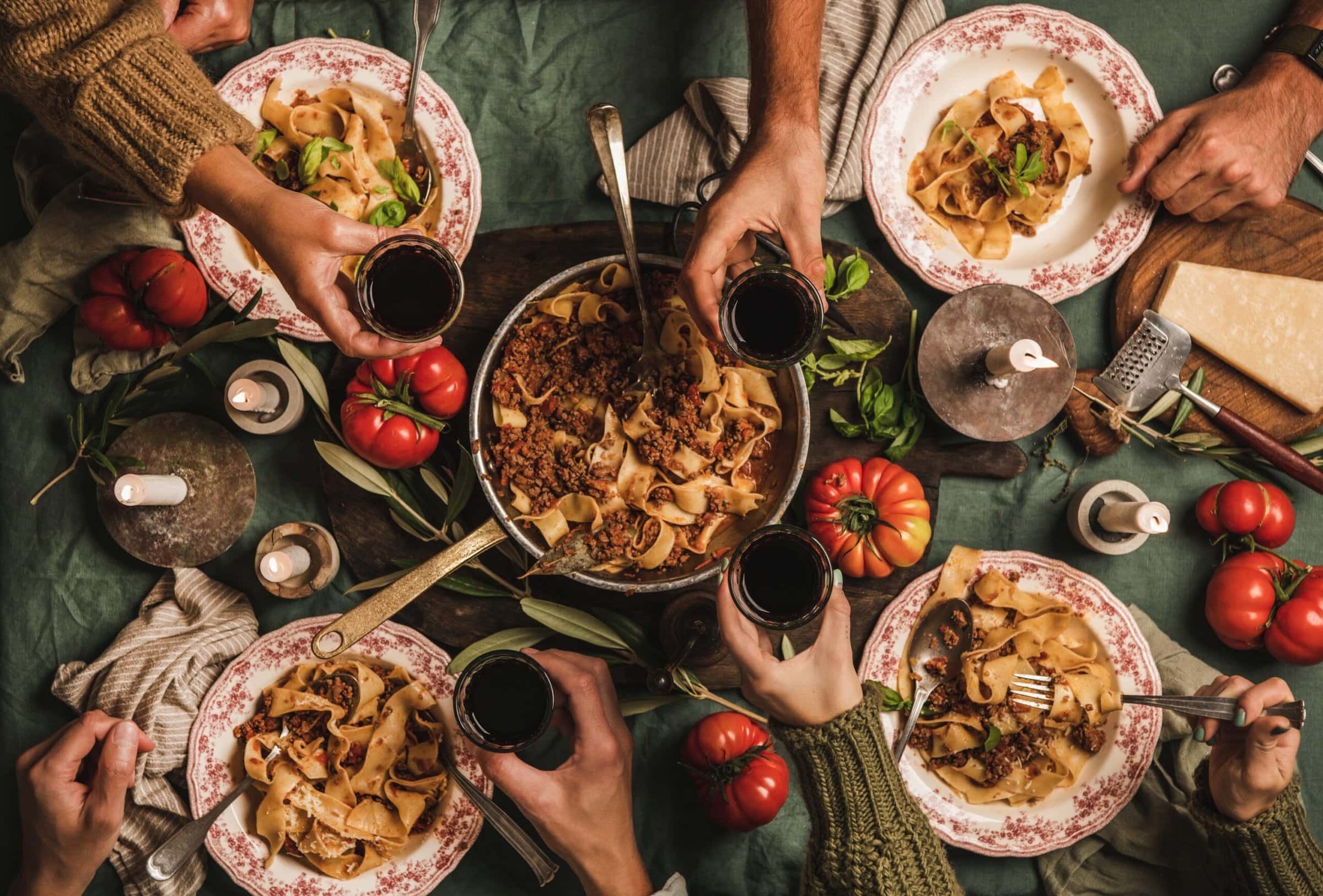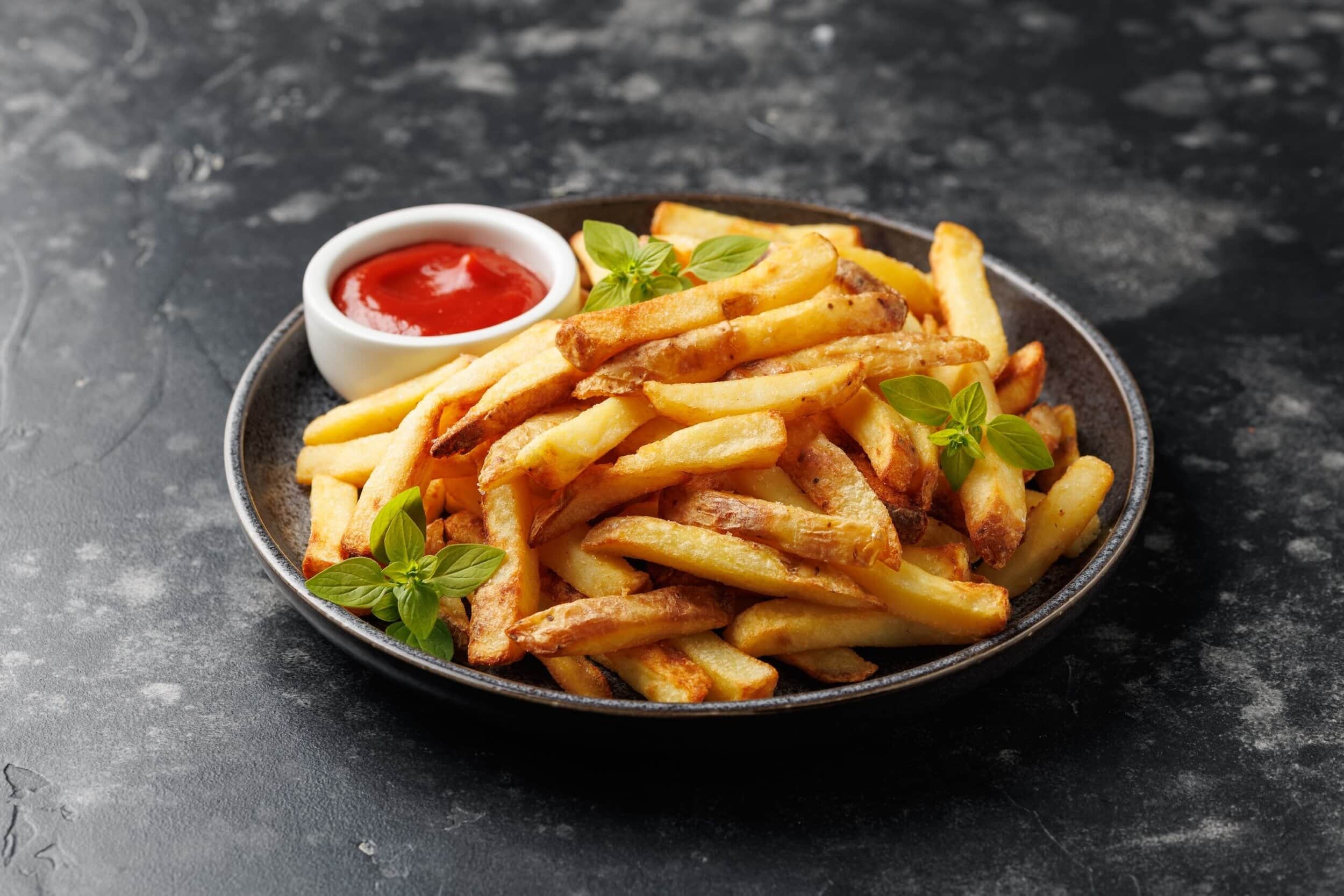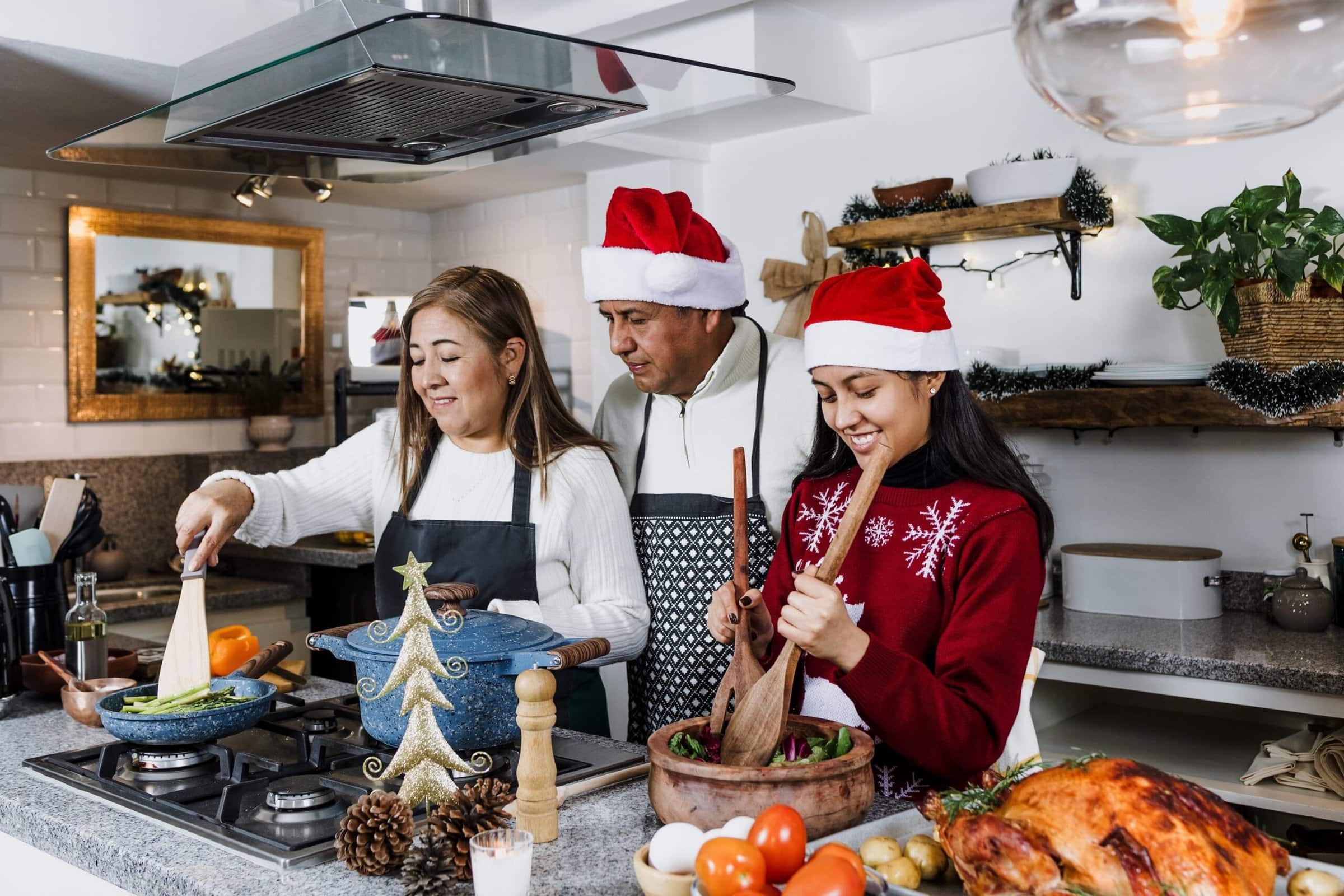What you’ll learn:
- Many holiday herbs, spices, fruits, and veggies contain natural anti-inflammatory compounds that help support your immune system and overall well-being.
- Using these seasonal flavors more intentionally can boost the health value of your meals without adding extra calories.
- Extend the benefits by choosing colorful produce, using herbs and spices, and pairing these foods with healthy routines throughout the season and beyond.
The holidays often center around rich, comforting meals, but many of the flavors we love this time of year actually support your health, too. The cinnamon, ginger, and pumpkin in pumpkin pie; the rosemary and thyme on roasted vegetables; and the cranberries in that classic sauce are all packed with natural anti-inflammatory compounds that help protect your body and support overall well-being.
These seasonal herbs, spices, fruits, and vegetables contain antioxidants like polyphenols, flavanols, and carotenoids that help reduce chronic inflammation and support long-term health.
Do anti-inflammatory foods really make a difference?
According to Dr. Karen Mann, Noom’s Medical Director, the answer is yes. “Many of the herbs and spices we use around the holidays, like cinnamon, ginger, and rosemary, are packed with compounds that help calm inflammation in the body,” she explains. “When you include these foods regularly, even in small amounts, they can support your immune system and overall well-being over time.”
The best part is that these ingredients usually come with big flavor without extra calories. That sprinkle of cinnamon in your coffee adds cinnamaldehyde, which helps reduce oxidative stress. The thyme on roasted vegetables brings rosmarinic acid, a compound that supports a healthy inflammation response. The bright color of pumpkin and sweet potato comes from carotenoids, which help protect your cells. Even a square of dark chocolate after dinner offers flavanols that support heart and brain health.
In other words, many holiday favorites already have the power to help your body feel its best. Let’s highlight the seasonal staples that bring both festive flavor and natural nourishment, and explore simple recipes that help you celebrate them.
What are anti-inflammatory foods?
First of all, inflammation isn’t necessarily bad. It’s your body’s way of healing. When you cut your finger and it turns red, that’s acute inflammation, and it’s an important signal for your body to start the healing process. But when inflammation lingers for months or years internally, it becomes chronic, which can increase your risk of heart disease, diabetes, and some cancers.
An anti-inflammatory diet helps lower chronic inflammation and supports overall health. These foods are packed with antioxidants, compounds that protect your cells from damage caused by “free radicals.”
Key examples include:
- Polyphenols (found in colorful fruits and vegetables)
- Carotenoids (found in orange and yellow produce).
- Curcumin (from turmeric)
- Cinnamaldehyde (from cinnamon)
- Eugenol and gallic acid (from cloves)
- Rosmarinic acid (from rosemary and sage)
- Flavanols (from dark chocolate and cocoa)
- Chlorogenic acid (from coffee)
These chemicals work by “turning down” the body’s inflammatory signals, blocking processes in the body that can trigger inflammation.
What are the health benefits of foods with antioxidants?
Antioxidant-rich foods can play a powerful role in your health. Eating foods rich in them is linked to a lower risk of chronic diseases and a potentially longer lifespan, including:
1. Helping to prevent heart disease:
- How it works: Antioxidants counteract oxidative stress, which is a major driver of heart disease, blood pressure issues, and hardening of the arteries.
- The science: Studies show that specific dietary antioxidants (like flavonoids and vitamin C) help by blocking the oxidation of important molecules in the body, which keeps blood vessels healthy.
2. Supporting better blood sugar and preventing type 2 diabetes:
- How it works: High blood sugar levels increase the amount of oxidative stress in the body. Antioxidants essentially act as shields to protect the cells from this sugar-related damage.
- The science: Natural antioxidants help the body better manage this stress, which is critical because too much oxidative stress is heavily linked to the progression of Type 2 Diabetes.
3. Protecting against certain cancers:
- How it works: The traditional view is that antioxidants neutralize the free radicals that can damage DNA and lead to cancer development.
- The science: The research confirms this role is incredibly complex and depends on the situation. While they hold great promise for prevention, the use of concentrated supplements for people who already have cancer is still being studied carefully.
4. Supporting gut health:
- How it works: Antioxidants help keep your entire digestive system—including your gut microbes—in balance.
- The science: They do this in two ways: they reduce stress and inflammation inside the gut lining, and they also help to support and balance the diverse community of beneficial bacteria (the gut microbiome) that live there.
The good news is that you don’t have to go out of your way to find antioxidant-rich foods. Many of the healthy foods you eat already have them, especially around the holidays.
Dr. Mann explains, “When you eat a variety of colorful fruits, vegetables, and spices with antioxidants, you’re giving your body the tools it needs to fight inflammation and stay healthy over time. In addition to a healthy lifestyle, eating these foods can help protect against chronic diseases.”
Let’s explore which holiday foods can help you reap these benefits while eating a festive meal.
Anti-inflammatory holiday spices
Holiday spices are some of the most powerful anti-inflammatory foods you can enjoy, and a little goes a long way. A few tasty examples are:
- Cinnamon: Cinnamon helps reduce harmful free radicals and supports healthy blood sugar balance. You can add it to holiday baked goods, warm drinks, oatmeal, or roasted squash for a cozy seasonal flavor.
- Nutmeg: Nutmeg helps reduce inflammation by boosting the body’s natural antioxidant defense mechanisms. It pairs well with holiday desserts, creamy sauces, mashed sweet potatoes, or spiced drinks like eggnog.
- Star anise: Star anise contains compounds that help regulate key inflammation pathways. Use it to flavor holiday mulled cider, braised meats, or simmered fruit compotes for a warm, aromatic touch.
- Clove: Cloves are high in eugenol, one of the strongest natural antioxidants. They can be added to holiday hams, spiced cookies, mulled wine, or slow-cooked sauces for a fragrant boost.
- Ginger: Ginger contains gingerols and shogaols, compounds that act like natural pain relievers. It works wonderfully in holiday cookies, teas, stir-fries, or roasted vegetable dishes for a zesty kick.
Ginger-Carrot Soup
This antioxidant-packed soup brings a kick of fresh ginger for both spice and anti-inflammatory benefits.
- Time to make: 45 mins
- Servings: 2
- Calories: 390
Ingredients
- 1 garlic clove, minced
- 3 onions, finely chopped
- 5 tbsp minced ginger
- 2 tbsp olive oil
- 2 tsp turmeric
- 3 cups vegetable broth
- 1 oz unflavored pea protein powder (or other)
- 2 tbsp orange juice
- 2 large carrots, peeled and cut
- 4 tbsp sour cream
- Salt, to taste
- Freshly ground black pepper, to taste
Directions
- Sauté garlic, onion, ginger, and carrot for 2 minutes in oil.
- Add the turmeric, saute briefly, then add in the broth, protein powder, and the juice.
- Simmer softly for 15 minutes, stirring occasionally.
- Puree the soup, and stir in the cream.
- Reduce to your desired consistency, or add a little broth if too thick.
- Season with salt and pepper.
- Serve immediately.
Also, try these Noom recipes by searching in the recipes section of the “Success Kit.”
- Anise-Scented Balsamic Beets: This root vegetable side dish is baked with a fragrant anise for extra holiday flavor.
- Granola Apple Pie: Cinnamon is a classic and healthy addition to comforting apple pie.
Anti-inflammatory herbs
The classic trio of Thanksgiving herbs, sage, rosemary, and thyme, does more than make your holiday stuffing taste amazing; they’re packed with plant compounds that protect your brain and reduce inflammation.
- Sage: Sage contains rosmarinic acid, an antioxidant that helps fight inflammation. You can use it in holiday meals by adding fresh leaves to roasted vegetables, stuffing, or savory sauces.
- Rosemary: Rosemary contains carnosic acid, carnosol, and rosmarinic acid, all of which help reduce oxidative stress and inflammation. It works beautifully in holiday dishes when sprinkled over roasted meats, infused in olive oil, or added to roasted potatoes.
- Thyme: Thyme contains flavonoids, which can help protect cells from damage. During the holidays, you can use thyme in soups, roasted vegetables, stuffing, or mixed into compound butters for a flavorful touch.
Roasted Pumpkin, Garlic, and Rosemary Soup
This fragrant roasted pumpkin soup gets a festive touch from fresh rosemary, toasted pumpkin seeds, and creamy feta—comforting, aromatic, and perfect for holiday gatherings.
- Time to make: 60 mins
- Servings: 8
- Calories: 240
Ingredients
- 1.1 lb pumpkin, peeled, de-seeded, and cut into ¾-inch chunks (about 4 cups)
- 12 cloves garlic, peeled and halved
- 2 large onions, peeled and sliced (about 2 cups)
- 3½ oz pumpkin seeds, lightly toasted (about ¾ cup)
- 2 tbsp fresh rosemary leaves, roughly chopped
- ⅓ cup extra virgin olive oil
- 3⅓ cups vegetable stock
- 3½ oz feta cheese (about ¾ cup, crumbled)
Directions:
- Preheat the oven to 350°F (180°C) and line a roasting dish with baking paper.
- Combine the pumpkin, garlic, onions, pumpkin seeds, rosemary, and olive oil in the dish. Toss everything together until evenly coated.
- Roast, stirring every 10 minutes, until the pumpkin is tender and golden—this should take about 45 minutes.
- Transfer the roasted mixture to a food processor and blend until it forms a chunky paste.
- Bring the vegetable stock to a boil in a large pot, then stir in the pumpkin mixture. Simmer gently for about 5 minutes, adding more stock if needed to reach your preferred consistency.
- Season to taste, then serve warm with crumbled feta on top.
Search for these recipes in your Noom “Success Kit”
- Stuffed Acorn Squash: This stunning holiday side dish is packed with fresh herbs, like thyme, sweet dried cranberries, mushrooms, and more.
- Sage and Onion Stuffing: This lighter version of a traditional stuffing is infused with aromatic (and healthy) sage.
Anti-inflammatory holiday fruits & vegetables
If you’re looking for anti-inflammatory holiday dinner recipes, adding colorful fruits and veggies to your meals is an easy way to get more anti-inflammatory nutrients. They’re not just good for fighting inflammation—they’re great for your overall health.
- Pumpkin: Pumpkin is rich in beta-carotene, an antioxidant that helps protect cells and reduce inflammation. You can enjoy it in holiday pies, soups, roasted dishes, or even spiced pumpkin drinks.
- Sweet potatoes: Sweet potatoes are high in potassium and carotenoids, which support heart health and help lower inflammation. They’re perfect for roasting, mashing, or adding to casseroles and gratins during the holidays.
- Brussels sprouts: Brussels sprouts contain protective plant compounds that help reduce inflammation and support heart health. Try roasting them with garlic, balsamic, or bacon for a flavorful holiday side dish.
- Green beans: Green beans are packed with polyphenols, antioxidants that support metabolism and fight inflammation. They can be steamed, sautéed, or added to holiday casseroles for a healthy, festive touch.
- Cranberries: Cranberries are rich in antioxidants and plant compounds that support gut health and help lower inflammation. Use them in sauces, relishes, baked goods, or even holiday salads for a tangy, nutrient-packed boost.
Curious how that works? Dr. Mann explains, “Many of the benefits of plant-based foods start in your gut. Compounds in foods like cranberries reach your colon, where gut bacteria break them down into smaller, powerful molecules that help regulate inflammation and strengthen your body’s defenses.”
Crustless Pumpkin Pie
This lightened-up version of the traditional pie features pumpkin puree and is lower in calories because it doesn’t have a crust.
- Time to make: 50 minutes
- Servings: 8
- Calories: 98
Ingredients
- One can (15-oz) or 1 3/4 cups pumpkin puree
- 4 whole eggs
- 4 tbsp. almond butter or preferred nut butter
- 1 tbsp. raw honey
- 2 tsp. ground cinnamon
- 1 tsp. ground nutmeg
- Optional: handful of pecans, shredded coconut, light whipped cream
Directions
- Preheat the oven to 350 degrees and grease a pie dish.
- Beat eggs in a large bowl.
- In another bowl, combine pumpkin, almond butter, honey, cinnamon, and nutmeg.
- Fold the pumpkin mixture into the eggs and mix until smooth.
- Pour pumpkin mixture into a pie dish and cook at 350 degrees for 40 minutes. Cool before eating.
On the app, you can find recipes for:
- Cranberry-Orange Coffee Cake: This fruit-filled cake is packed with dried cranberries and flavored with fresh orange juice.
- New Green Bean Casserole: This salad keeps green beans on the table, but lightens things up with low-fat milk instead of canned soup and baked onion rings on top instead of the canned ones.
Plus, don’t miss our best tips for healthier Thanksgiving side dishes.
Anti-inflammatory treats: Coffee and chocolate
Research suggests that certain treats, like coffee and dark chocolate & cocoa powder, contain plant compounds that may help reduce inflammation and support long-term health.
- Coffee: Studies suggest moderate coffee consumption is linked to reduced inflammation and a lower risk of conditions such as type 2 diabetes, Parkinson’s disease, Alzheimer’s disease, colon cancer, and liver and kidney disorders. You can enjoy it during the holidays as a warm morning ritual, in a coffee-based dessert, or a festive flavored latte.
- Dark chocolate & cocoa powder: Dark chocolate and cocoa powder are rich in antioxidants like flavanols, which research shows may help improve oxidative balance and reduce inflammation. You can add cocoa powder to oatmeal, savor a square of dark chocolate after dinner, or mix it with fruit and nuts as a festive treat.
Anti-inflammatory recipes as one piece of the wellness plan
Dr. Mann emphasizes that while food can help prevent disease, it is not a substitute for professional medical treatment. “Food is a form of preventing disease, but that doesn’t mean you shouldn’t work with a provider if you need treatment for inflammation-related conditions. Antioxidants and anti-inflammatory foods are just one of many tools to support your overall health and wellbeing,” she explains.
The real benefits come from long-term consistency, not just occasional holiday meals. “Antioxidants are one piece of the puzzle, but you also need to nourish your body with whole, unprocessed foods, joyful movement, adequate sleep, and stress management. All these components work together to fight inflammation, and food is just one part of that,” says Dr. Mann.
Tips for including anti-inflammatory foods year-round
Eating anti-inflammatory foods isn’t just for special occasions; it’s most effective when part of your everyday routine. Small, consistent choices can help reduce inflammation and support long-term health. Here are some tips:
- Use herbs and spices daily: These don’t just add nearly calorie-free flavor to your meals, they add important compounds that can reduce your risk of certain conditions.
- Add a dash of cinnamon to coffee
- Add some chopped rosemary to a marinade
- Sprinkle turmeric into a dry rub
- Choose recipes with color: The brighter the plate, the more anti-inflammatory compounds you’re getting.
- Add slices of roasted red peppers to sandwiches
- Toss purple cabbage or shredded carrots into salads or grain bowls
- Top oatmeal or yogurt with blueberries, raspberries, or pomegranate seeds
- Replace highly processed carbs with high-fiber foods: Instead of refined carbs (like white bread), fried foods, and foods high in saturated fats that can increase inflammation.
- Focus on fruits, vegetables, beans, and whole-grain foods
The bottom line: Anti-inflammatory recipes can be used all year to support your health
Antioxidants are a powerful ingredient that are linked to major anti-inflammatory health benefits. That’s why people have been using herbs for inflammation for years. By incorporating more of these anti-inflammatory ingredients into your meals, you can support your long-term health without compromising flavor or tradition. These foods aren’t a replacement for medical treatment, but they are a simple, delicious way to support your well-being.
The real benefits come from consistency, not just holiday meals. Small, repeatable choices—like adding more colorful veggies, using anti-inflammatory spices, and choosing whole foods over processed ones—add up over weeks and months to lower inflammation and boost long-term health.
For lasting results, pair these dietary habits with regular movement and sustainable lifestyle changes—just like Noom encourages all year long. If you’re looking for more health tips and anti-inflammatory recipes, download the Noom app today on iOS & Android. You’ll get personalized guidance, daily tips, and easy meal ideas to help you reach your goals and feel your best.
Why you can trust us
At Noom, we’re committed to providing health information that’s grounded in reliable science and expert review. Our content is created with the support of qualified professionals and based on well-established research from trusted medical and scientific organizations. Learn more about the experts behind our content on our Health Expert Team page.

















